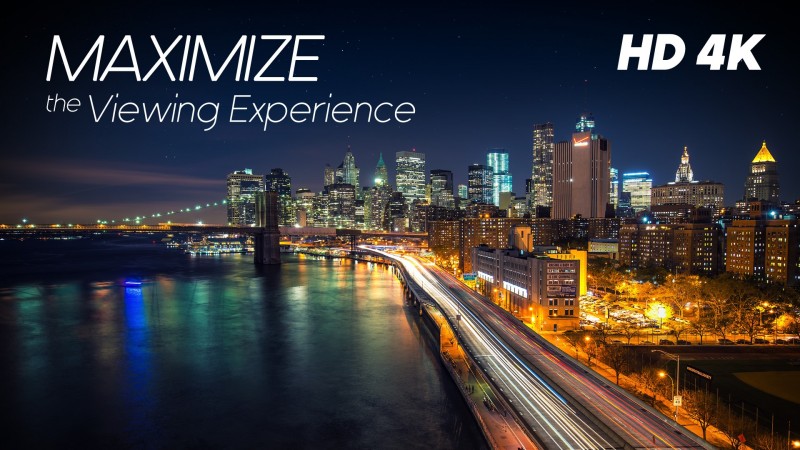TV and Monitors HD 4k: Resolution
Screen Resolution
Resolution is the number of distinct pixels in horizontal and vertical that can be displayed. A Full HD panel, for example, is composed by 1920×1080 pixel, that is 1920 horizontal pixels and 1080 vertical pixels. Multiplying these two values we obtain the total pixels on the screen, which in this case are more than two million. A higher resolution corresponds to a more detailed picture.

The word Pixel, is the contraction of Picture Element. These small colored dots form any type of digital image, and are each composed of sub-pixels that contain RGB colors (red-green-blue), next to each other and, illuminated with a certain intensity, go to form all combinations of the specific color palette available.
The parameter that measures the ratio between resolution (number of pixels) and the display size (diagonal in inches) is said pixel density and is indicated using the abbreviation DPI (Dots Per Inch) or PPI (Pixel Per Inch). For example a 24 inches display that shows a Full HD image (1920×1080) has a density equal to 91,79 PPI. The same screen at a 4k resolution (Ultra HD, or 3840×2160) has a density equal to 183.58 PPI.
√(1920² + 1080²) = 2203 / 24 inches = 91,79 PPI
√(3840² + 2160²) = 4406 / 24 inches = 183.58 PPI
Resolution of the Human Eye
Human organs of perception have physical impassable limitations. A healthy human ear perceives frequencies from 20Hz to 20kHz. Stir sounds of frequency lower or higher than this range, it would not produce noticeable results. Something similar happens with our eyes[1].
An healthy eye can perceive details up to 1 arc minute (1/60 of a degree). Beyond this distance objects are mixed among themselves and are blurred. This is because, as in all optical systems, the eyes have an angle of resolution[2] minimum below which they are not able to perceive details.

Under normal contrast and considering the minimum distance of focusing, we can distinguish between 250 and 290 DPI. But the spatial resolution decreases dramatically increasing the viewing distance (after 1 meter we’re just under 75 DPI) and even falls in situations of low contrast.
To make this issue less technical, we can do a simple experiment. Take two pictures of a black X on a red background; both images have the same physical size, but are rendered at different resolutions, respectively 8×8 and 16×16.
Looking at the animation, we can notice how pixels of the image on the right mix faster than those of the image on the left. Since the pixel density increased, the distance between pixels (measured in pixel pitch) decreases, allowing our eyes to merge them into a unique object, giving us the illusion of looking at a uniform image instead of a series of squares.
On the other hand, if we put in front of us two screens of the same size but with different resolution and we gradually approach them, the screen with a lower resolution will lose quality much more quickly than the one with higher resolution. This means that:
The higher the resolution, the lower may be the distance from the screen before the picture collapses in pixels. The lower the resolution, the greater must be the distance to make pixels capable to compose uniform objects.
But there’s more, because the spatial resolution of the eye is not uniform. Nearby the central region of the retina, visual acuity is very high, but it degrades rapidly as you move away from the fovea[3]. This means that our peripheral vision is much less detailed (blurred) than central. If we move too close to the image, the field of view is too broad and does not allow us to see the peripheral details. On the other hand if we’re too distant, the spatial resolution diminish drastically impairing the image in its entirety.
In the next chapter we will see how to get the most out of HD and Ultra HD panels, taking into account the correct viewing distance.
Notes:
- The Limits of Human Vision – Michael F. Deering ⬆
- Minimum angle of resolution (MAR) is the smallest distance where two lines are perceived as separate and depends on health of the retina and the accuracy of the optical system – WebVision ⬆
- Though the eye receives data from a wide field, the acuity over most of that range is poor. To form high resolution images, the light must fall on the Fovea – Hyperphysics ⬆
